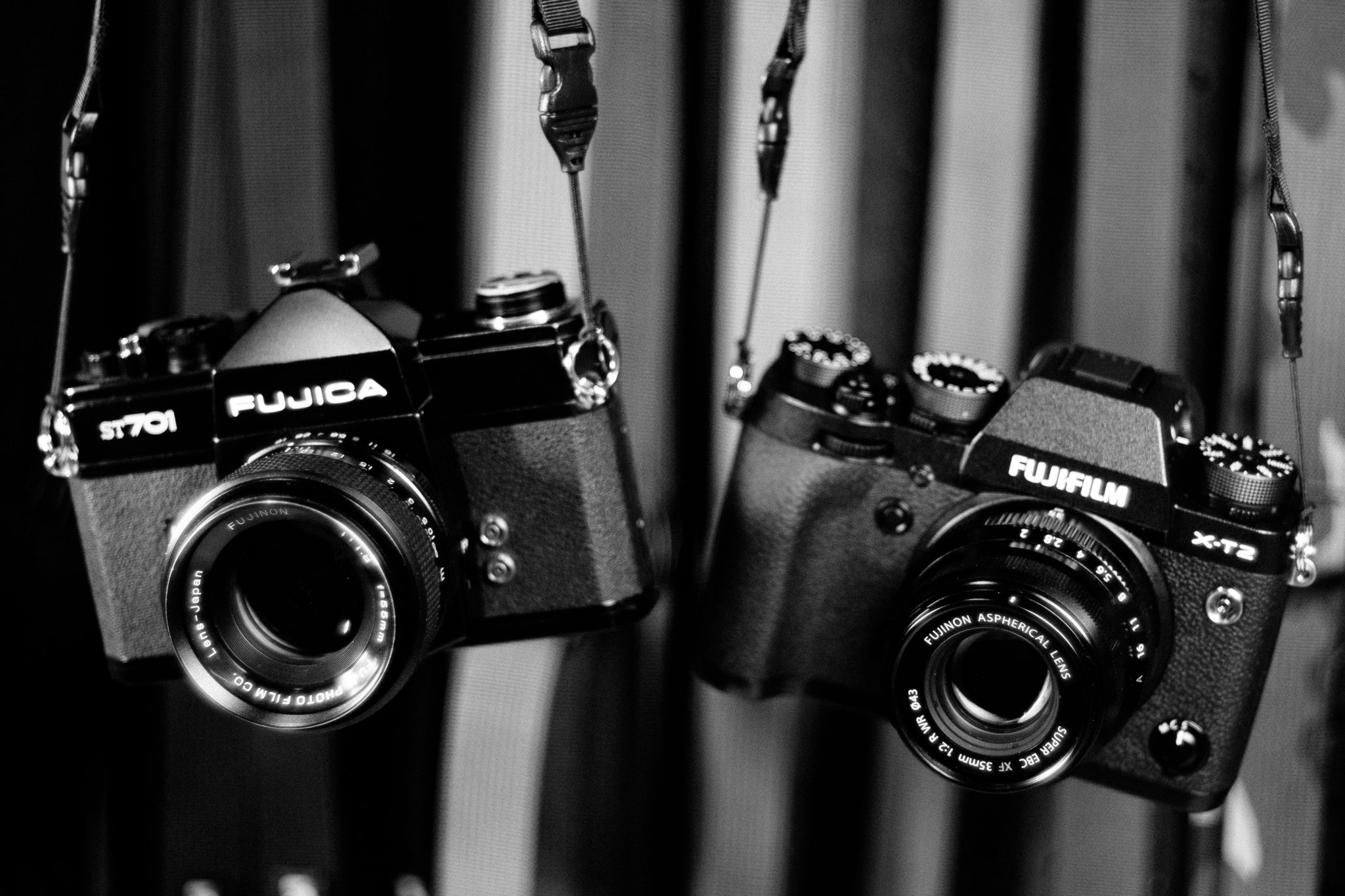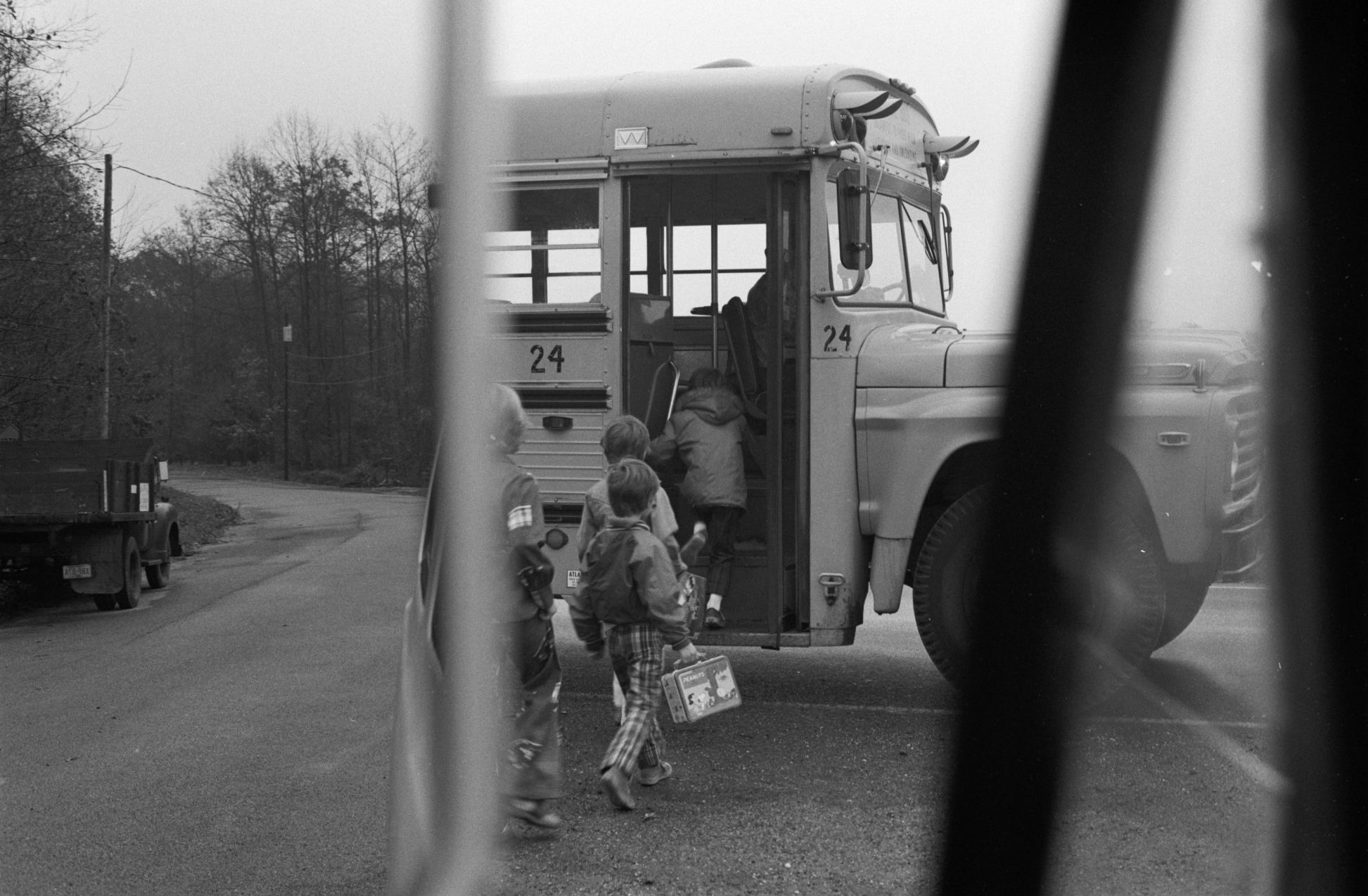
As far back as I can remember, my dad took photos. Not just casual family snaps either — he attended photography classes at our local community college, developing and printing artful imagery.
He had what I think was a GAF L-CM early on (I only know this because it appears in mirror self-portraits), and at some point he traded up to a Fujica ST701. This is the camera I remember — mostly because of my strong personal connection with it.




In the mid 1980’s, I signed up for photography classes, like my dad. Mostly, I wanted to meet girls and smoke cigarettes — but photography seemed like good excuse to do that. I appropriated the Fujica, went away for the summer, took lots of photos, learned to use a darkroom and smoke cigarettes (though not at the same time).
I didn’t think much about the camera — not like people think about their cameras now. It’s been said the best camera is the one you have with you, but at that time, the best camera was the one I had — and I didn’t want for more.
I “forgot” to give back the ST701, and it went where I went — capturing important, artful, and sometimes embarrassing moments over the years.




When the light meter failed in the early 2000’s, I replaced it with a very capable Nikon FE (maybe the subject of a future blog post) — eventually going digital and moving to a humongous Nikon D1x, and then a D200 (which seemed downright puny compared to the D1x) complemented by a handful of lenses.
Problem was … my cameras had gotten so darn big that I’d only use them for occasions or paid gigs. Sure, I had a pocketable digital camera too, but the images were distractingly characterless. There was nothing nostalgia-worthy about them. What I missed about my film cameras, and in particular my Fujica (for the sentimental reasons), was the sheer spirit of spontaneity — a product of the reasonable size and the image quality which left nothing to be desired.
When I saw the Fujifilm X-Pro1, I immediately thought back to blissfully shooting the ST701. I bought the X-Pro1 with the XF35 f2, hoping to recapture that … the simplicity … the sense of nostalgia.
Did that happen? Kind of. I regained the ability to throw a camera in the glove box, and it reignited my will to take photos (which is ridiculous — because the will to take photos is not the same as taking photos). At the same time, I figured out how to approximate the look of the film images I missed so much (ironically, by degrading my now “superior” images).





But, as with so many things in this era, there’s a certain amount of “analysis paralysis” brought about by the endless flow of information. “Would another lens be better? … Do I need these video features? … Is my auto-focus fast enough? Blah. Blah. Blah.” I succumbed to Gear Acquisition Syndrome — contracting an X-E2s, X-Pro2, and the X-T2 pictured with the old Fujica ST701 at the top of this post (but I can forgive myself, because they’re all so danged gorgeous).
I’m pretty sure I’ll never get back the exact feeling I got from the Fujica; too many things have gotten complicated over the years. But there are things I’ve gained…
Simplr, for one (you can read a little about that here). Also, an underlying sense of camaraderie with others who felt photography had gotten too complicated. In particular, I’d like to thank the Fujifilm community — especially the pros, who graciously donated their time to help develop these camera straps — for the love of beautiful images and the desire to keep things simpler (if not simple).
JP